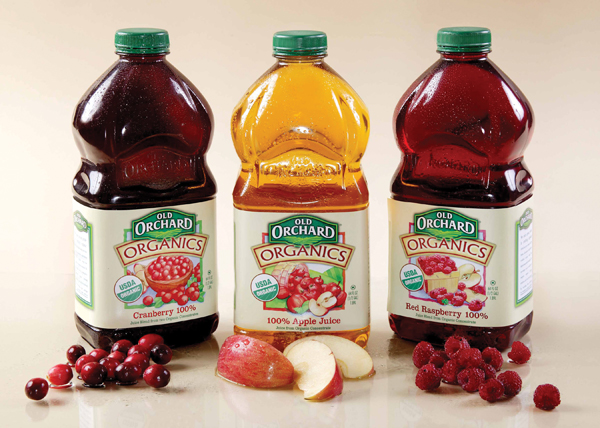MARKET TRENDS: Large Gains for Labels
World
demand for labels to reach 49 billion square meters in 2013.

 World demand for labels is projected to expand 4.3% per year
through 2013 to 49 billion square meters. Value demand is expected to grow 5.3%
per year to $105 billion. The pressure-sensitive segment - which overtook the
wet-glue segment in importance at the global level in the late 1990s - will
continue to see above-average gains, accounting for almost 55% of global label
demand by 2013. In contrast, wet-glued products will not fare as well, with
demand even declining in many developed food and beverage markets where plastic
containers continue to replace traditional steel cans and glass bottles, as
well as with jars that use wet-glued products. Other less significant technologies
with favorable outlooks include shrink sleeve, wrap-around film and in-mold
labels. Through 2013, plastic labels will continue to register much faster
gains than paper labels, which are largely used in wet-glued applications.
These and other trends are presented in World Labels, a
new study from The Freedonia Group Inc., a Cleveland-based industry research
firm.
World demand for labels is projected to expand 4.3% per year
through 2013 to 49 billion square meters. Value demand is expected to grow 5.3%
per year to $105 billion. The pressure-sensitive segment - which overtook the
wet-glue segment in importance at the global level in the late 1990s - will
continue to see above-average gains, accounting for almost 55% of global label
demand by 2013. In contrast, wet-glued products will not fare as well, with
demand even declining in many developed food and beverage markets where plastic
containers continue to replace traditional steel cans and glass bottles, as
well as with jars that use wet-glued products. Other less significant technologies
with favorable outlooks include shrink sleeve, wrap-around film and in-mold
labels. Through 2013, plastic labels will continue to register much faster
gains than paper labels, which are largely used in wet-glued applications.
These and other trends are presented in World Labels, a
new study from The Freedonia Group Inc., a Cleveland-based industry research
firm.
The Asia-Pacific region will expand its share of the world label market from 32% in 2008 to 36% in 2013. China and India will account for much of this increase, while Japan will see weak growth. The United States is expected to have below-average gains through 2013, but will remain strong relative to other developed markets. Western Europe will see a noticeable deceleration in its label market growth, with some highly intensive (relative to population) users of labels in the region such as Ireland, Scandinavia and the United Kingdom expected to see outright declines. Latin America, Eastern Europe and the Africa/Mideast region, which combined accounted for less than 20% of global label demand in 2008, will all see above-average gains through 2013.
Among the various market segments, the smaller pharmaceutical sector will register particularly strong gains, aided by improving health care in the developing world and an aging population in the developed world. The food and beverage sectors will see weaker gains as a result of market maturity and stagnant population growth in the developed world combined with the increasing penetration of cans, pouches, and other packaging media that use printed product descriptions rather than labels. Label products with strong growth will include counterfeit deterrence labels, retail sector radio frequency identification tags (RFIDs) that allow labels to assume inventory control and management as well as convey information, and tamper-evident labels.
For more information, contact Corinne Gangloff, The Freedonia Group Inc., 767 Beta Drive, Cleveland, OH 44143-2326; phone (440) 684-9600; fax (440) 646-0484; e-mail pr@freedoniagroup.com; or visit www.freedoniagroup.com.

Photo courtesy of Old Orchard Brands.

Table.
The Asia-Pacific region will expand its share of the world label market from 32% in 2008 to 36% in 2013. China and India will account for much of this increase, while Japan will see weak growth. The United States is expected to have below-average gains through 2013, but will remain strong relative to other developed markets. Western Europe will see a noticeable deceleration in its label market growth, with some highly intensive (relative to population) users of labels in the region such as Ireland, Scandinavia and the United Kingdom expected to see outright declines. Latin America, Eastern Europe and the Africa/Mideast region, which combined accounted for less than 20% of global label demand in 2008, will all see above-average gains through 2013.
Among the various market segments, the smaller pharmaceutical sector will register particularly strong gains, aided by improving health care in the developing world and an aging population in the developed world. The food and beverage sectors will see weaker gains as a result of market maturity and stagnant population growth in the developed world combined with the increasing penetration of cans, pouches, and other packaging media that use printed product descriptions rather than labels. Label products with strong growth will include counterfeit deterrence labels, retail sector radio frequency identification tags (RFIDs) that allow labels to assume inventory control and management as well as convey information, and tamper-evident labels.
For more information, contact Corinne Gangloff, The Freedonia Group Inc., 767 Beta Drive, Cleveland, OH 44143-2326; phone (440) 684-9600; fax (440) 646-0484; e-mail pr@freedoniagroup.com; or visit www.freedoniagroup.com.
Links
Looking for a reprint of this article?
From high-res PDFs to custom plaques, order your copy today!


